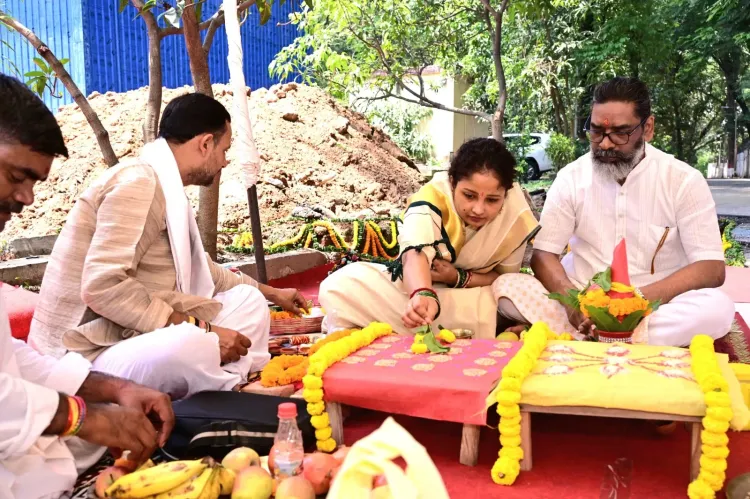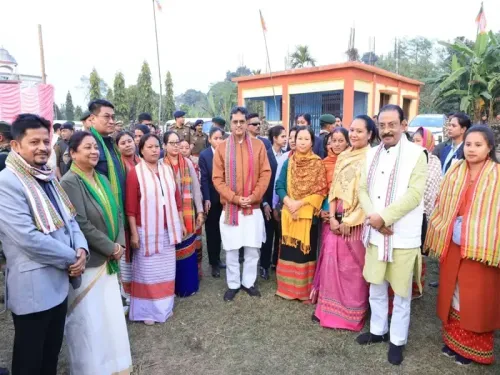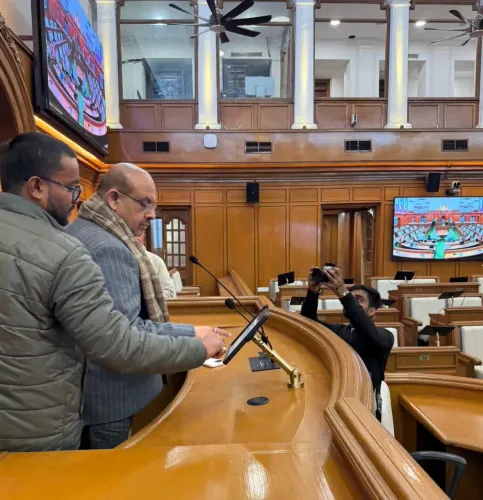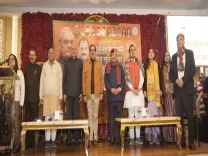Is Ranchi's British-era CM House Being Replaced by a Modern Complex?

Synopsis
Key Takeaways
- The British-era CM House is being replaced by a modern facility.
- The new complex will feature advanced security and amenities.
- Construction began on Buddha Purnima, symbolizing new beginnings.
- Jharkhand aims for improved governance with this new structure.
- The historic residence had a reputation for political misfortune.
Ranchi, May 12 (NationPress) The iconic British-era Chief Minister’s residence on Kanke Road in Ranchi is set to become a chapter of the past as the groundwork for a cutting-edge CM House, featuring modern amenities and enhanced security systems, has officially commenced.
On the auspicious occasion of Buddha Purnima on Monday, Chief Minister Hemant Soren, alongside his wife and MLA Kalpana Soren, conducted a ceremonial puja and laid the foundation stone for the new edifice.
Spanning 22 acres, the existing CM House has been declared structurally outdated and administratively insufficient by the state's Building Construction Department, which has catalyzed the need for a new facility.
A comprehensive design and Detailed Project Report (DPR) have been crafted, incorporating modern needs such as disaster resilience and administrative efficiency.
Until the new complex is ready, Residence No 5 on Kanke Road will temporarily serve as the Chief Minister’s office. This bungalow, previously occupied by former AJSU MLA and party leader Sudesh Mahto, has been vacated for this purpose.
The forthcoming CM House will be earthquake-resistant and constructed in alignment with contemporary safety and security standards.
It will boast several lounges, visitor halls, a dedicated press room, and fully integrated office spaces, which include offices for the Chief Minister, Principal Secretary, and other senior officials.
Additional features will encompass separate accommodations for security personnel, including barracks; guest rooms for distinguished visitors and foreign dignitaries; a designated space for high-level meetings and briefings; and advanced surveillance and communication systems.
Before Jharkhand's formation as a separate state in November 2000, the building was the official residence of the Commissioner of the South Chotanagpur Division.
Its construction commenced in 1853 under the leadership of W.J. Allen, who was then the Principal Agent of the Lieutenant Governor of Bengal.
Completed in 1854, Commissioner J.H. Crawford was its first resident. During colonial times, it was referred to as Crawford House.
Throughout the years, the residence became imbued with local legends and superstitions. It was commonly believed that no occupant, be it Commissioner or Chief Minister, could serve a full term. Only Commissioner Elliott Dalton is noted to have remained there for over three years.
After becoming the official Chief Minister's residence post-2000, the lore of political misfortune persisted.
Raghubar Das, who served from 2014 to 2019, was the only CM to complete a full term while living in the bungalow.
To address the building's ominous reputation, he allegedly made several adjustments to its Vastu design, including constructing a Hanuman temple in the western section and consistently using the western gate for entry and exit.
However, despite finishing his term, Das lost the Assembly election and had to vacate the residence.
During his first term as Chief Minister in 2013, Hemant Soren opted not to reside in the building.
In his second term, starting in 2019, he chose his previous official residence next to the old CM House as his home, while still utilizing the British-era building for official and administrative duties.
With the initiation of this new construction, Jharkhand is poised to witness the emergence of a modern Chief Ministerial complex, symbolically closing the door on the past and paving the way for a new governance era.










